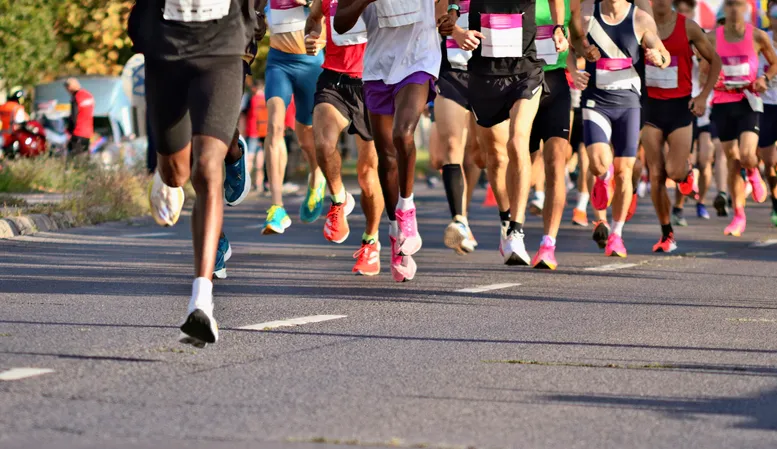This is what running 26 miles actually does to your body

This weekend thousands of people will be pounding the pavement in London, as the London marathon takes place.
From endorphin surges to back ‘bounces’, experts share some of the things to expect when you run 26 miles.
Body enters overdrive mode
When running a marathon, your body goes into overdrive, uses up energy stores, breaks down muscle, and loses fluid and electrolytes.
Physiotherapist Sammy Margo, who works with Deep Freeze and Deep Heat, explains: ‘The body goes into overdrive, uses up glycogen (energy) stores in the liver, breaks down muscle and loses fluid and electrolytes – all of which contribute to fatigue and a sense of grogginess and tiredness after the run.’
Muscles become inflamed
Obviously, most people don’t run 26 miles every day – so it’s a bit of a shock to our muscles.
Sammy says: ‘Muscles become inflamed and sore – particularly the calves and thighs – and runners may develop cramp.
‘Biomarkers of muscle damage – such as lactate dehydrogenase and creatine kinase – increase during the run, peaking after the end of the marathon.
‘These enzymes take around a week to fall back to normal levels.’
She says warming up is essential to reduce the risk of sore muscles, particularly delayed onset muscle soreness (DOMS).
Cramps and joint discomfort are common
From over-contraction and overuse of muscles to a lack of sodium, there are numerous reasons why runners experience the notorious ‘cramp’.
Kimiko Ninomiya, the founder of women’s running collective Hot Boys Athletics, is running today – her sixth marathon – and she expects a few cramps and aches to happen.
She explains: ‘This time around, I like to think I’ve properly prepared and I’ve been consistent about all my training (from everything I’ve tracked on Strava, you’d say I’m ready). But I’m prepared for the race to take everything out of me. I’m expecting my hamstring to cramp up, ankles and knees to ache, back pain, a headache – literally all the worst things I’ve ever experienced combined into one race.
‘I’m expecting to hobble from the finish line, like Bambi, while simultaneously feeling a wave of euphoria wash over me for having just finished such a hard effort.
‘In the days following a hard race, my legs are always very stiff but it’s important to try to get moving, whether it’s tracking a short and easy run on Strava or going for a long walk around the city (my favourite is to go to an art gallery).’
You’ll get (temporarily) shorter
According to the Journal of International Medical Research, you’re expected to lose almost half an inch in height during a marathon.
This loss in height is a result of the back muscles tensing under strenuous conditions and fluid loss between the intervertebral disks.
But, worry not, this is only temporary and you’ll be back to full height when fluid levels are replaced.
Stress on knees, hips and ankles
Even when you’ve trained, your body still goes through a tremendous amount of stress while running.
Physiotherapist Ben Lombard says: ‘The muscles in your hips, knees, ankles and spine are constantly loaded with each step, which is a great way to strengthen them – but if loaded too much too soon you can easily create overload injuries.
‘These commonly include muscle sprains, tendon injuries, or even ligament sprains and bone stress injuries.’
Ben says to help lessen the load on your joints, it all comes down to training and preparation.
He explains: ‘To run 26.2 miles, you should condition your body appropriately with a carefully considered training plan.
‘This should include both running and strength and conditioning sessions. Your runs should get progressively longer, and ideally you will do some shorter faster intervals, some race-paced runs, and some hills, too.’
Think of these steps as tiny impacts through the spine for the duration of the event. From the outset in the early part of the race, you’re likely soft on your feet, posture tall and efficient. As time wears on and the number of steps climbs, more and more of these impacts will become less efficiently handled by our bodies.
‘At the same time, your postural muscles will be having to manage these many “bounces” up and down during the entirety of the event.’
As a result, runners might experience fatigue and discomfort in the lower back at the end of the gruelling run.
